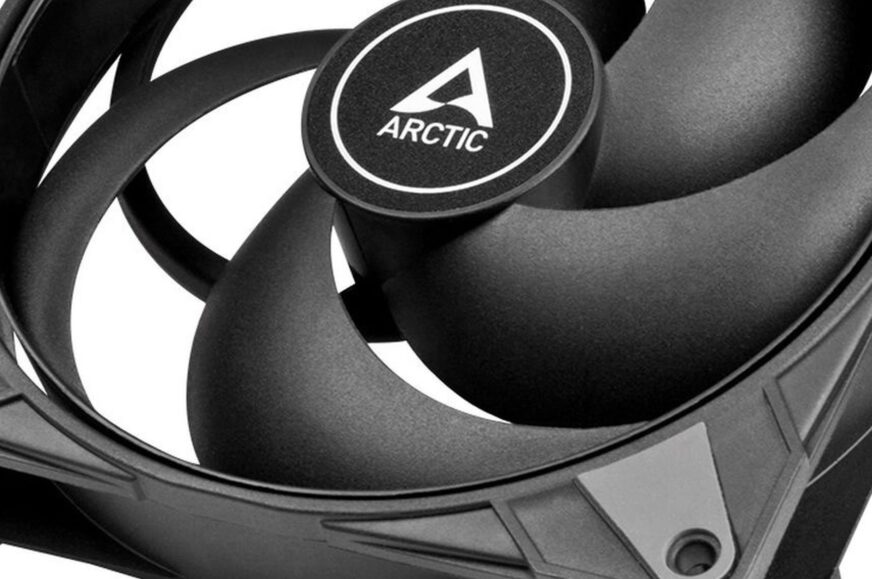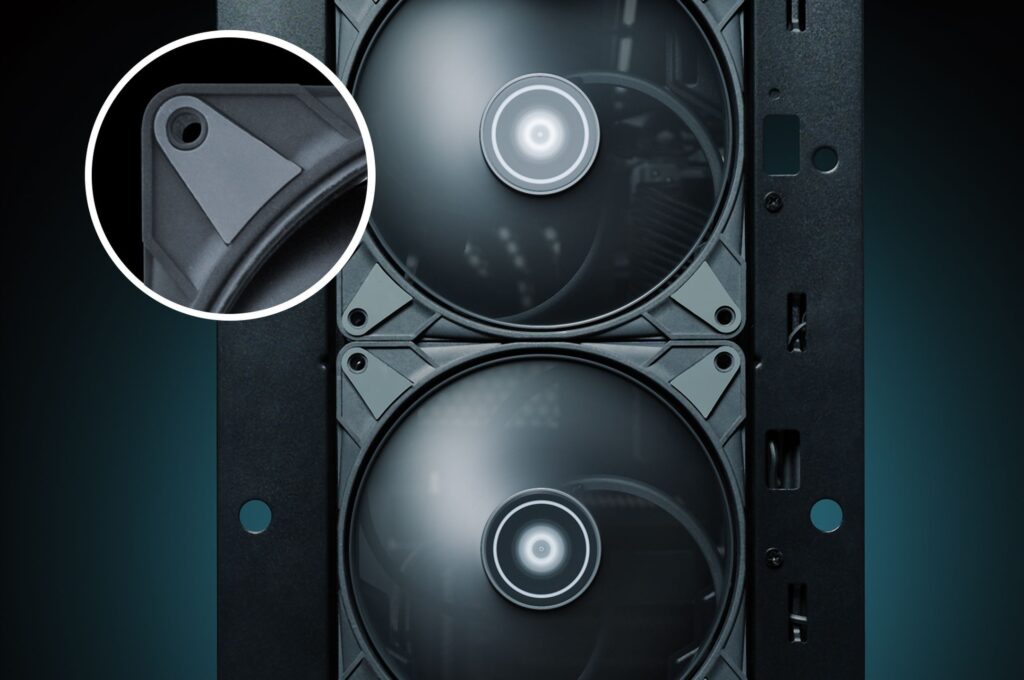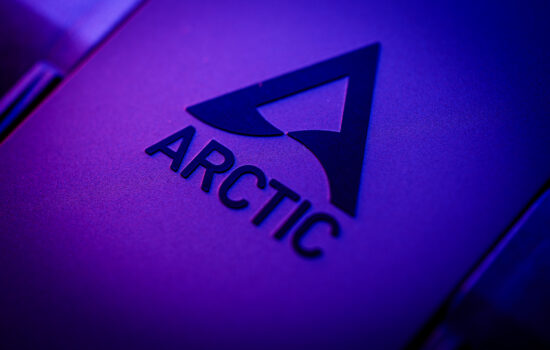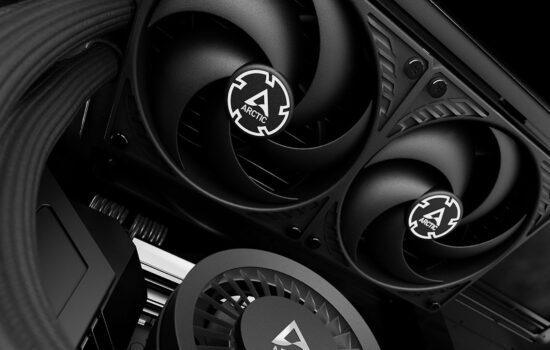Arctic P14 Max
Those interested in 140mm fans have reason to rejoice. After the P12 Max, Arctic is also releasing the P14 Max, which is one size larger. These stick to the already established features, such as a significant speed increase, but also probably a noise reduction even at low speeds. By all accounts, these should be universal fans that will be efficient across the entire speed spectrum, and on all types of obstacles.
Within Arctic’s gradual refinement of the 5-blade P fan design, it finally made it to 140mm models without A-RGB. The new Arctic P14 Max fans build on a smaller number of blades, which are oversized. This means that the gaps between the individual blades are still small by the standards of this format, which contributes to high static pressure in addition to high airflow. This is particularly important in order to ensure that an obstacle causes the lowest possible airflow loss and thus the highest possible cooling performance.
In contrast to the “basic” P12 (PWM PST) models, there is a fairly significant change in the use of a hoop. The tips of all blades all share a common hoop, which is part of the impeller. Its contribution is mainly in stiffening the otherwise relatively flexible blades, whose vibrations often reach resonant frequencies and whose sound is characterized by more aggressive tonal peaks. This is especially the case at the lower, “rumblier” frequencies of the sound. By stiffening the blades with a hoop, the vibrations are reduced and the tonal peaks should fall along with them to achieve a more pleasant acoustic profile. Similar behavior can be seen, for example, in a comparison of the Arctic P12 (with a hoopless impeller) and the Arctic P12 A-RGB (with a hoop on the impeller).
With 140 mm fans, of course, it will be a little different, but the principle remains the same. Since we don’t have any data on the Arctic P14 fans, we won’t speculate on anything and you’ll see how things work later in our tests. These are coming soon and we will probably do a small series where we will start the analysis with P14 PWM PST models, followed by the P14 CO PWM PST (with ball bearings) and we’ll conclude the trilogy with the P14 Max fan tests. These, by the way, like the P12 Max and P14 CO use fluid (FDB) bearings.
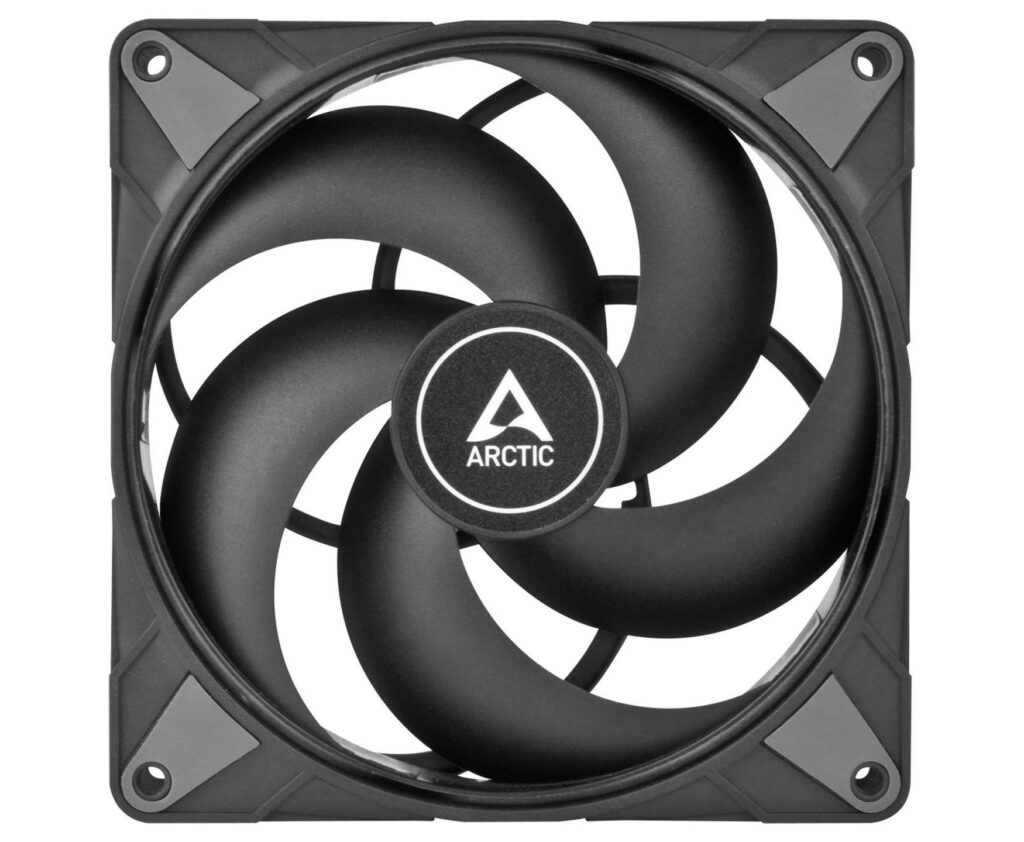
Also thanks to the stiffened blades, the P14 Max fans can reach higher speeds than the P14 (which tops out at 1700 rpm). Quite significantly so, at 100% PWM duty cycle, or at 12 V, the P14 Max reaches up to 2800 rpm. This speed should correspond to an airflow of up to 161.40 m³/h and a static pressure of 4.18 mm H2O . However, the possibility of controlling to very low speeds, according to the parameters as low as 400 rpm, is still retained. And at a lower PWM duty cycle than 3%, the fan is supposed to switch off.
According to the above characteristics, there is a strong expectation that the P14 Max fans will rank among the very top not only at maximum speed, but also at lower speeds at comparable noise levels to other fans. This is regardless of the specific application. Arctic writes about “ideal” fans for radiators, but they shouldn’t fall behind in system case positions either. There are no technical reasons for it.
Compared to the older, or cheaper (whatever you want to call it…), P14 models, anti-vibration pads have been added to the frame to also suppress vibration and reduce secondary noise caused by the vibration of the component that the fans are in contact with.
The P14 Max fans are now available for purchase, for example on Ebay. That’s for a price of 13 EUR, which is only temporary. MSRP is 18 EUR. In the case of the 5-pack, the price per piece is a bit lower due to the bulk discount. You can have five Arctic P14 Max fans, when you buy them in one pack, for 44 EUR or later for 60 EUR. But that’s just the suggested retail price, which isn’t what Arctic fans usually cost at retailers, they’re cheaper.
English translation and edit by Jozef Dudáš
- Contents
- Arctic P14 Max





